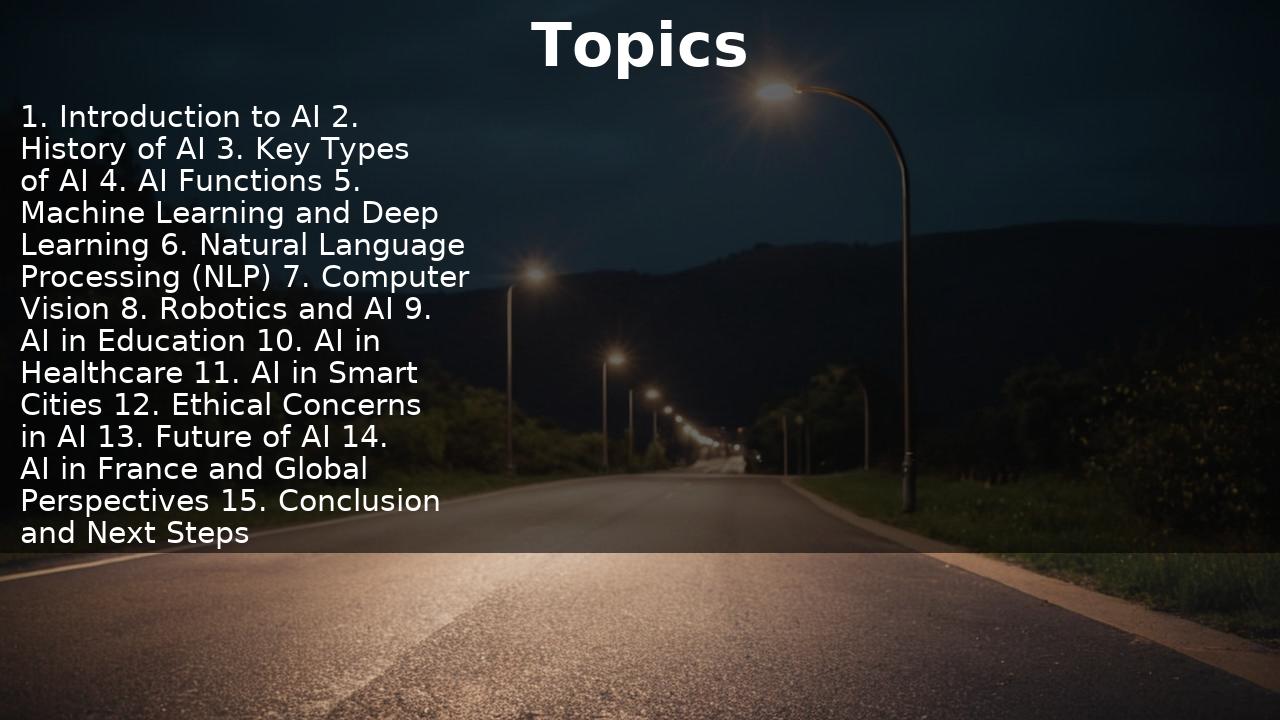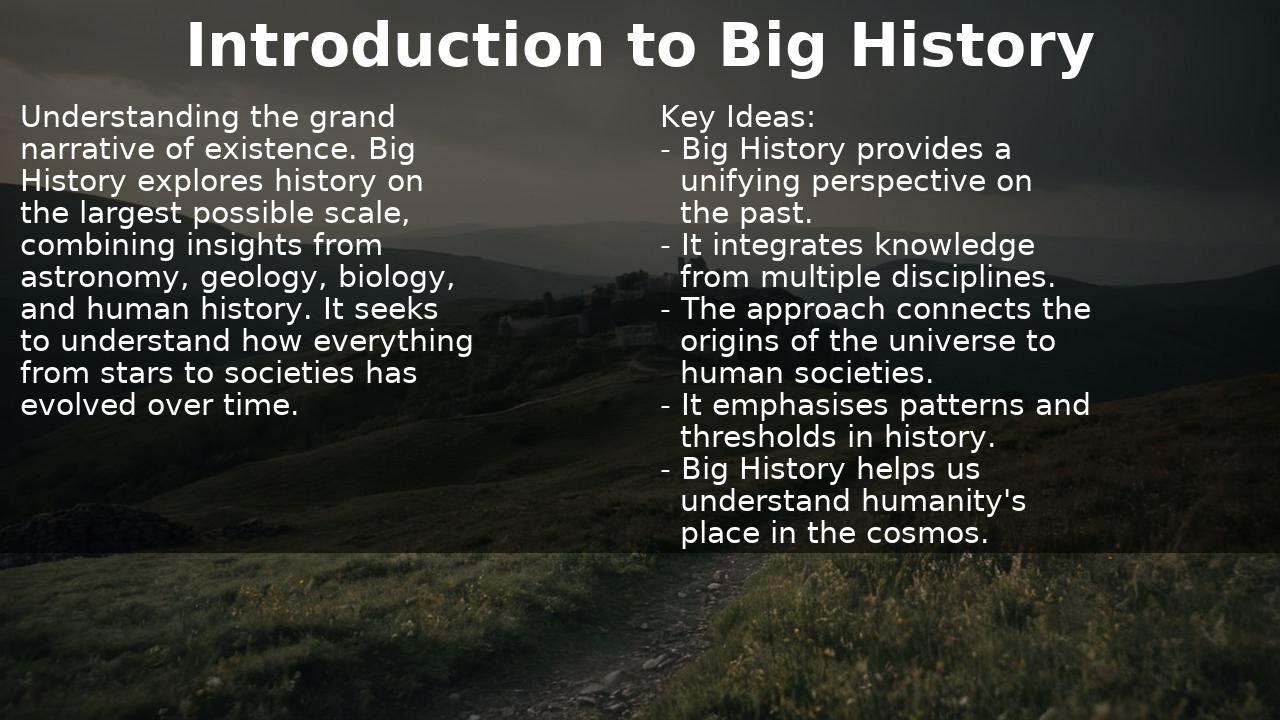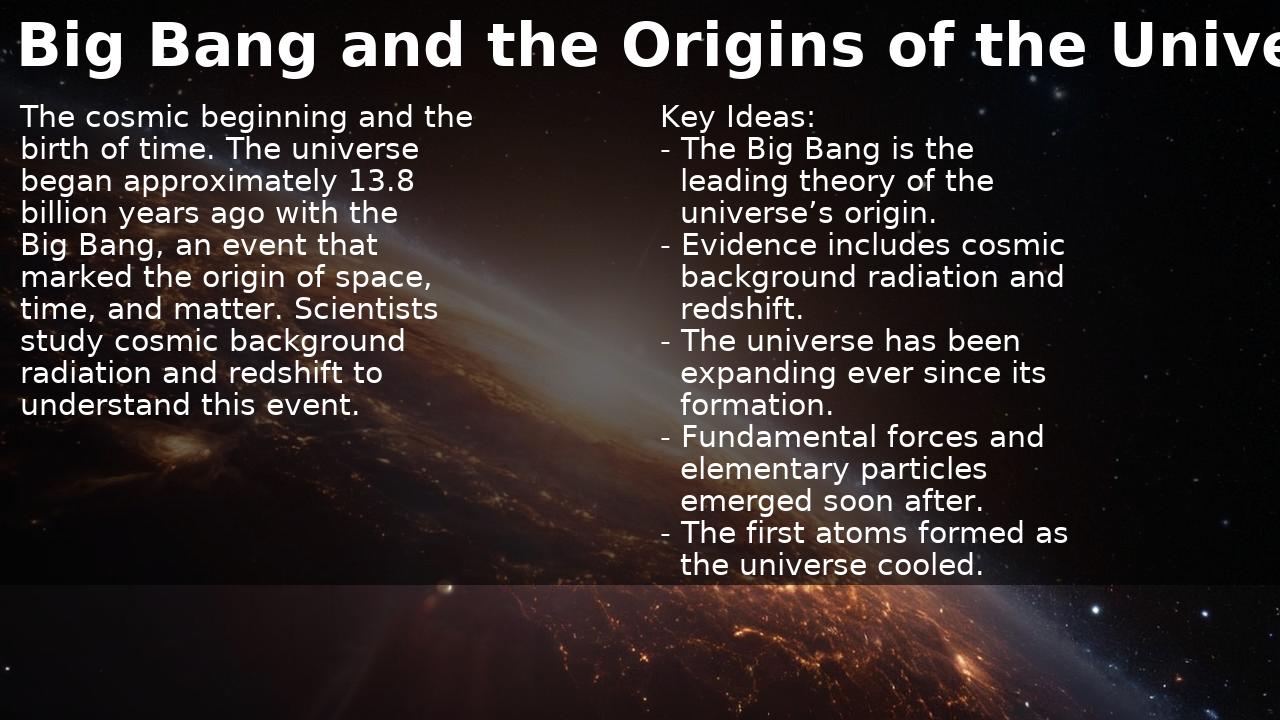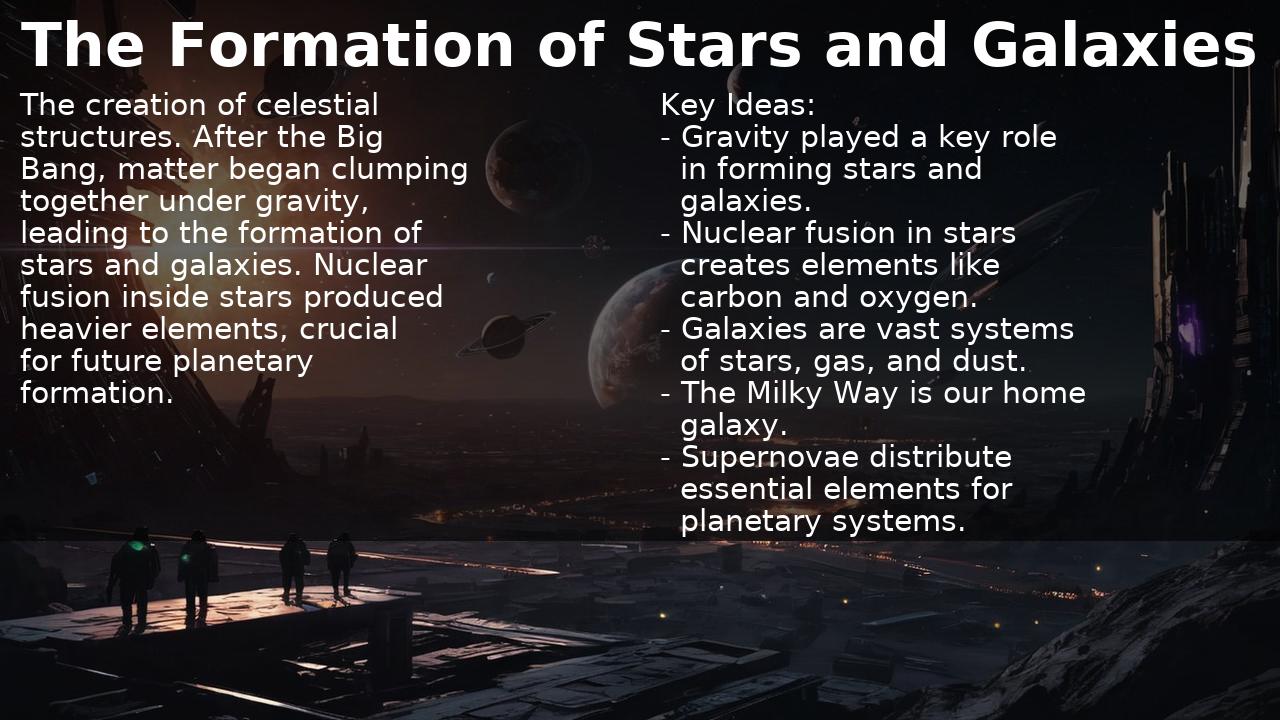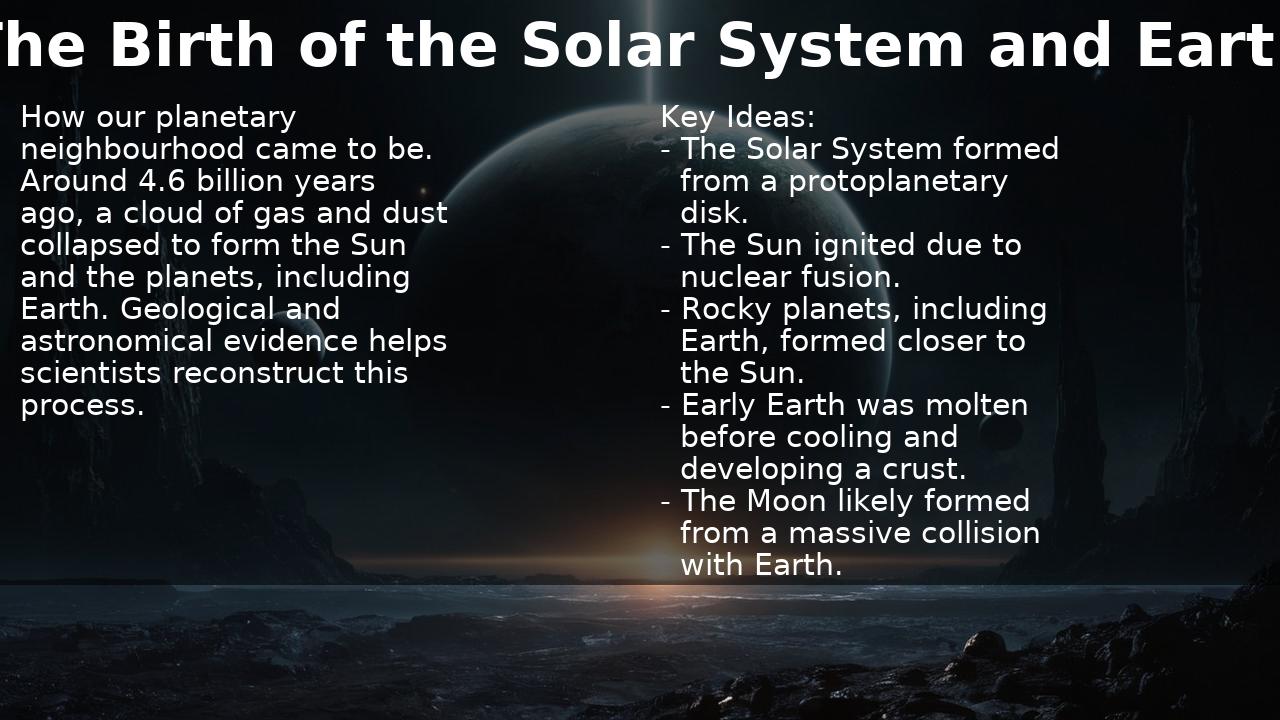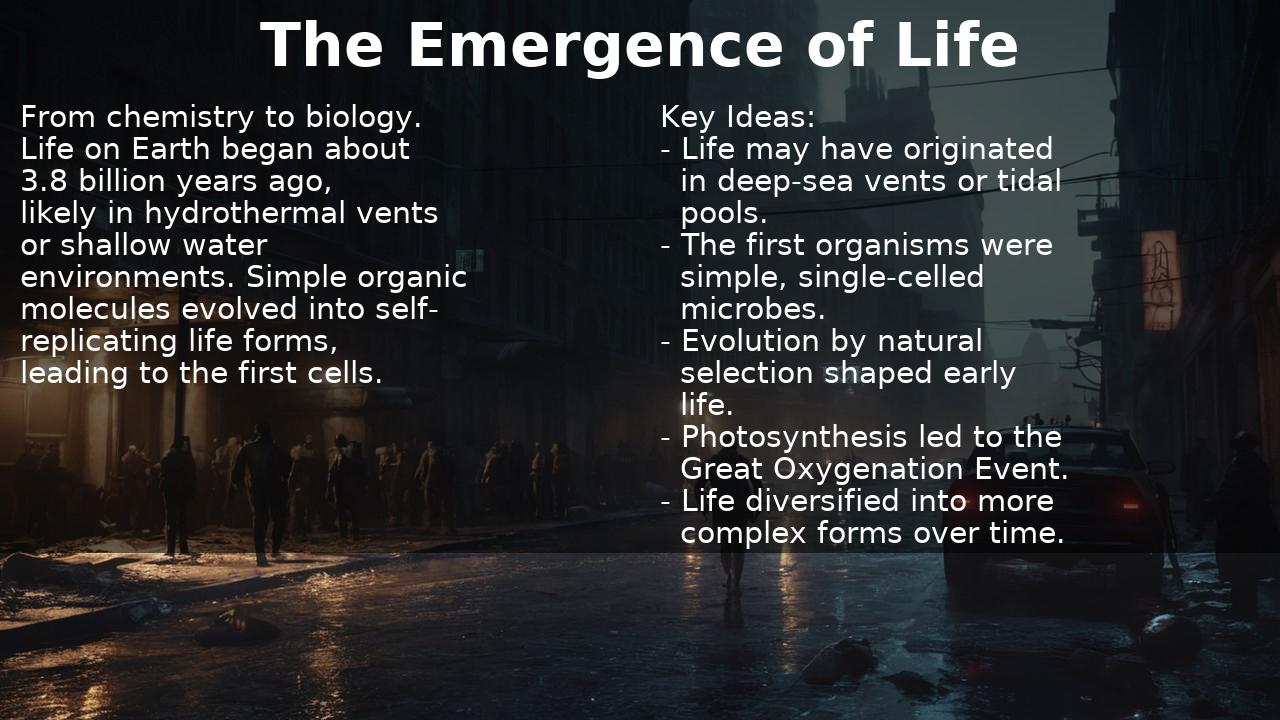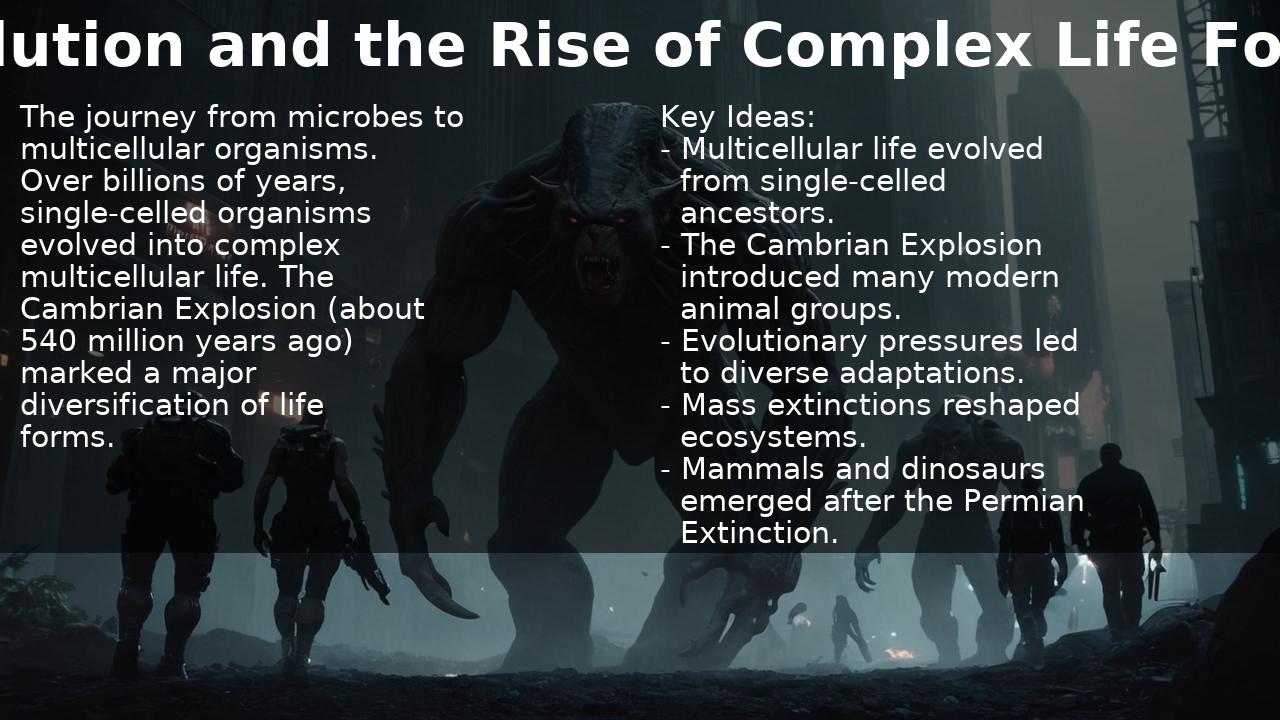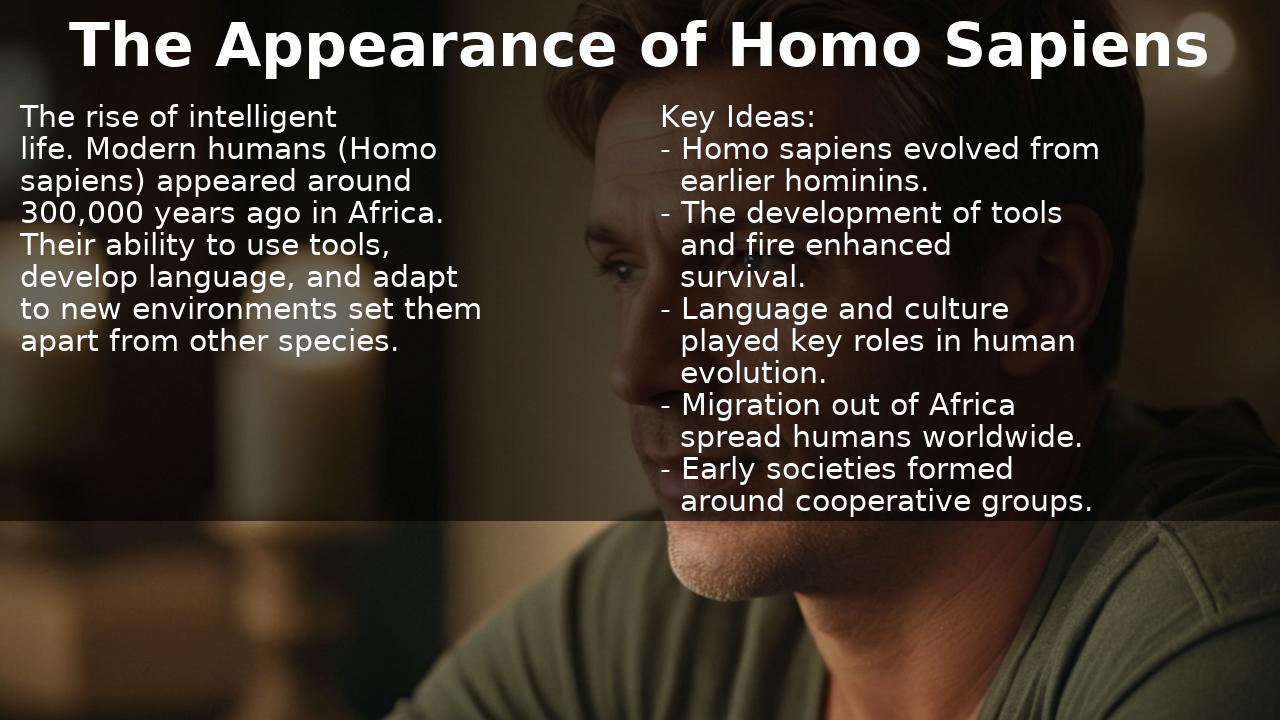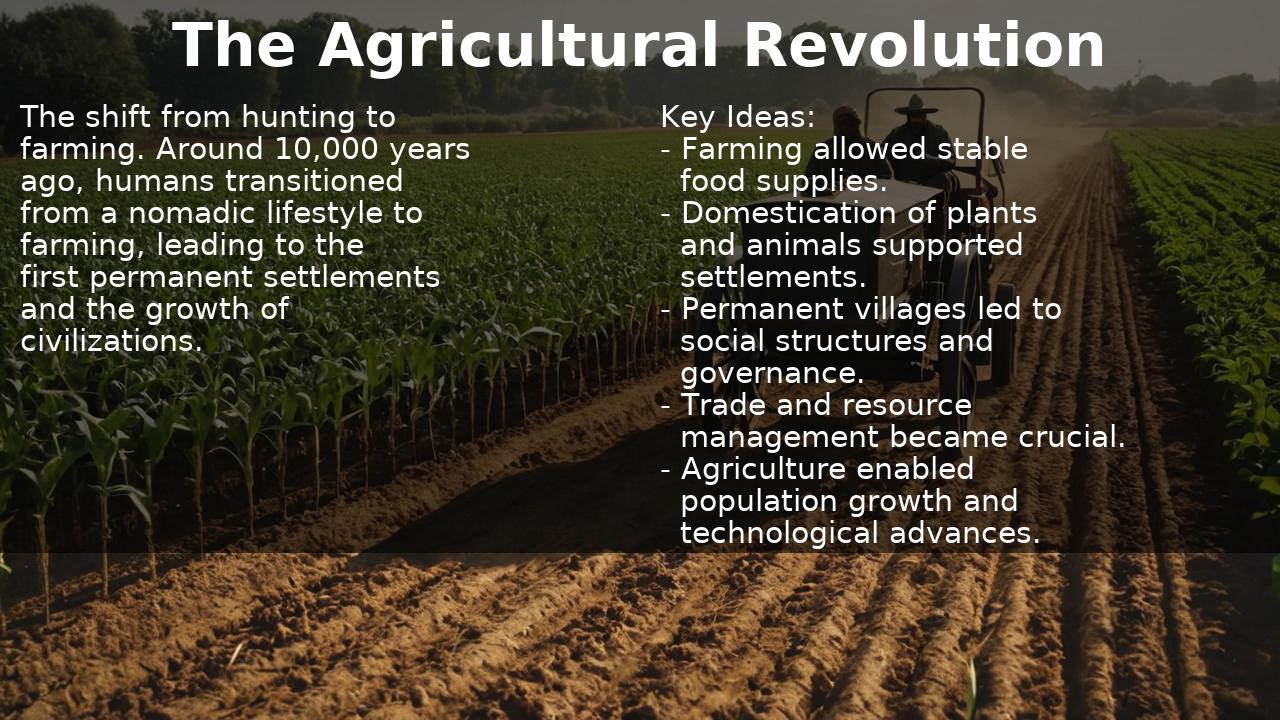Big History¶
Big History is an interdisciplinary approach to understanding the history of the universe, from the Big Bang to the present day. This course covers key milestones, including the formation of the universe, the emergence of life, and the development of human societies.
Topics¶
- Introduction to Big History
- The Big Bang and the Origins of the Universe
- The Formation of Stars and Galaxies
- The Birth of the Solar System and Earth
- The Emergence of Life
- Evolution and the Rise of Complex Life Forms
- The Appearance of Homo Sapiens
- The Agricultural Revolution
- The Rise of Civilisations
- The Modern World and the Future
Introduction to Big History¶
Understanding the grand narrative of existence.
Big History explores history on the largest possible scale, combining insights from astronomy, geology, biology, and human history. It seeks to understand how everything from stars to societies has evolved over time.
Key Ideas:
- Big History provides a unifying perspective on the past.
- It integrates knowledge from multiple disciplines.
- The approach connects the origins of the universe to human societies.
- It emphasises patterns and thresholds in history.
- Big History helps us understand humanity's place in the cosmos.

The Big Bang and the Origins of the Universe¶
The cosmic beginning and the birth of time.
The universe began approximately 13.8 billion years ago with the Big Bang, an event that marked the origin of space, time, and matter. Scientists study cosmic background radiation and redshift to understand this event.
Key Ideas:
- The Big Bang is the leading theory of the universe’s origin.
- Evidence includes cosmic background radiation and redshift.
- The universe has been expanding ever since its formation.
- Fundamental forces and elementary particles emerged soon after.
- The first atoms formed as the universe cooled.

The Formation of Stars and Galaxies¶
The creation of celestial structures.
After the Big Bang, matter began clumping together under gravity, leading to the formation of stars and galaxies. Nuclear fusion inside stars produced heavier elements, crucial for future planetary formation.
Key Ideas:
- Gravity played a key role in forming stars and galaxies.
- Nuclear fusion in stars creates elements like carbon and oxygen.
- Galaxies are vast systems of stars, gas, and dust.
- The Milky Way is our home galaxy.
- Supernovae distribute essential elements for planetary systems.

The Birth of the Solar System and Earth¶
How our planetary neighbourhood came to be.
Around 4.6 billion years ago, a cloud of gas and dust collapsed to form the Sun and the planets, including Earth. Geological and astronomical evidence helps scientists reconstruct this process.
Key Ideas: - The Solar System formed from a protoplanetary disk. - The Sun ignited due to nuclear fusion. - Rocky planets, including Earth, formed closer to the Sun. - Early Earth was molten before cooling and developing a crust. - The Moon likely formed from a massive collision with Earth.

The Emergence of Life¶
From chemistry to biology.
Life on Earth began about 3.8 billion years ago, likely in hydrothermal vents or shallow water environments. Simple organic molecules evolved into self-replicating life forms, leading to the first cells.
Key Ideas:
- Life may have originated in deep-sea vents or tidal pools.
- The first organisms were simple, single-celled microbes.
- Evolution by natural selection shaped early life.
- Photosynthesis led to the Great Oxygenation Event.
- Life diversified into more complex forms over time.

Evolution and the Rise of Complex Life Forms¶
The journey from microbes to multicellular organisms.
Over billions of years, single-celled organisms evolved into complex multicellular life. The Cambrian Explosion (about 540 million years ago) marked a major diversification of life forms.
Key Ideas:
- Multicellular life evolved from single-celled ancestors.
- The Cambrian Explosion introduced many modern animal groups.
- Evolutionary pressures led to diverse adaptations.
- Mass extinctions reshaped ecosystems.
- Mammals and dinosaurs emerged after the Permian Extinction.

The Appearance of Homo Sapiens¶
The rise of intelligent life.
Modern humans (Homo sapiens) appeared around 300,000 years ago in Africa. Their ability to use tools, develop language, and adapt to new environments set them apart from other species.
Key Ideas:
- Homo sapiens evolved from earlier hominins.
- The development of tools and fire enhanced survival.
- Language and culture played key roles in human evolution.
- Migration out of Africa spread humans worldwide.
- Early societies formed around cooperative groups.

The Agricultural Revolution¶
The shift from hunting to farming.
Around 10,000 years ago, humans transitioned from a nomadic lifestyle to farming, leading to the first permanent settlements and the growth of civilizations.
Key Ideas: - Farming allowed stable food supplies. - Domestication of plants and animals supported settlements. - Permanent villages led to social structures and governance. - Trade and resource management became crucial. - Agriculture enabled population growth and technological advances.

Slides¶
